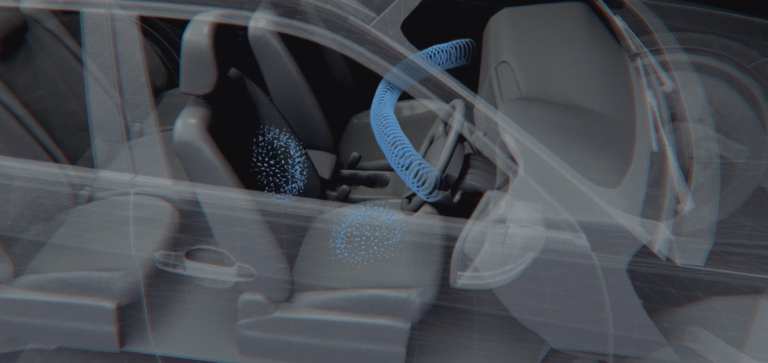To enhance the in-car media experience for occupants, Meridian Audio has developed an audio haptic technology named Vibrohaptic Audio. The system processes signals from the audio amplifier to control haptic drivers in the backs of the vehicle’s seats to deliver a deeper listening experience.
The company’s latest solution combines an analysis of psychoacoustic responses with a review of existing technologies to deliver a software-focused audio approach that can be customized to work with any haptic hardware.
“While it’s great to occasionally turn up the volume and have your seat pumping into your back like the bass from a giant speaker at a gig, that’s not how we receive the haptics of sound during most of our listening,” explained Paul Andrews, automotive business director at Meridian. “Outside of rock concerts, haptic inputs to our bodies are so subtle we often don’t even know they are there.
Take them away, however, and the reduction in perceived sound quality is immediately apparent. “We have conducted tests when we haven’t told the participants that they are sitting in our Vibrohaptic seat,” continued Andrews. “They generally don’t notice any haptic inputs, but when we turn it off, they immediately notice a reduction in the quality of the audio experience. That’s a great result; it proves that our science-based approach adds a lot of value whatever genre of music you are listening to, as well as for passengers enjoying films, games and other multi-media experiences.”
During the research and development stage, Meridian’s team focused on better understanding the frequency ranges to which people have the most significant haptic responses, in addition to how haptic and audio combine to deliver a “sensory landscape to which our minds respond”.
Drawing on these findings, the resulting signal processing technology can accurately select the most relevant elements of the audio signal and tailor them to control haptic inputs. These inputs can be either transient, such as the punch of rock music, or steady state, which enhances lower frequencies.
“It isn’t only about what you feel in the sensitive parts of your back,” said Dr Laurence Hobden, leader of Meridian’s research and applied technologies team. “The tiny vibrations are transmitted through your body and received by the bones of your ears, so it is essential that we ensure that the haptic inputs are congruous with the auditory inputs. Our aim is to build an acoustic experience that is lifelike, authentic and natural by managing all the inputs that we receive when listening.”
This understanding also enabled the company to create a signal processing and control system that allows occupants to tune the response to their personal requirements.
The Vibrohaptic Audio technology can be configured for any number of actuators, with each weighing approximately 80g. These are compatible with most DSP amplifiers. Additionally, Engineered by Meridian – the company’s in-house automotive consultancy – states it will work with customers to optimize hardware integration and enhance audio systems through tuning.
Meridian’s Vibrohaptic Audio technology will enter production in 2025 with a luxury vehicle manufacturer in Europe, followed by a new luxury China-based OEM.
For more on sound systems, please click here.



